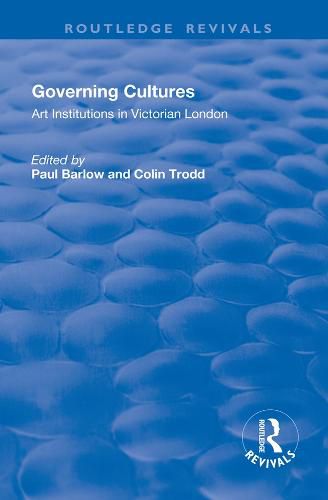Readings Newsletter
Become a Readings Member to make your shopping experience even easier.
Sign in or sign up for free!
You’re not far away from qualifying for FREE standard shipping within Australia
You’ve qualified for FREE standard shipping within Australia
The cart is loading…






This title was first published in 2000. London in the nineteenth century saw the founding of the National Gallery, the National Portrait Gallery, the Victoria and Albert Museum and the Whitechapel Art Gallery. Other, less permanent, organisations flourished, among them the British Institution, water-colour societies and the Society of Female Artists. These worked alongside the schools such as the Royal Academy and the Slade School of Art. In this volume, eleven scholars, experts on the individual institutions, analyse their complex histories to investigate such issues as: How did they generate and redesign their publics? What identities did they create? What practice of art making, connoisseurship and spectatorship did they enshrine? These reports elucidate the values associated with the key institutions and describe the responses and adaptation over time to major cultural developments: new movements, political change and the development of the Empire. The volume as a whole offers a fascinating account of the interconnections between these key institutions. Challenging conventional readings of the subject, the Introduction, by Paul Barlow and Colin Trodd, offers a definition of public art during the Victorian period.
$9.00 standard shipping within Australia
FREE standard shipping within Australia for orders over $100.00
Express & International shipping calculated at checkout
This title was first published in 2000. London in the nineteenth century saw the founding of the National Gallery, the National Portrait Gallery, the Victoria and Albert Museum and the Whitechapel Art Gallery. Other, less permanent, organisations flourished, among them the British Institution, water-colour societies and the Society of Female Artists. These worked alongside the schools such as the Royal Academy and the Slade School of Art. In this volume, eleven scholars, experts on the individual institutions, analyse their complex histories to investigate such issues as: How did they generate and redesign their publics? What identities did they create? What practice of art making, connoisseurship and spectatorship did they enshrine? These reports elucidate the values associated with the key institutions and describe the responses and adaptation over time to major cultural developments: new movements, political change and the development of the Empire. The volume as a whole offers a fascinating account of the interconnections between these key institutions. Challenging conventional readings of the subject, the Introduction, by Paul Barlow and Colin Trodd, offers a definition of public art during the Victorian period.